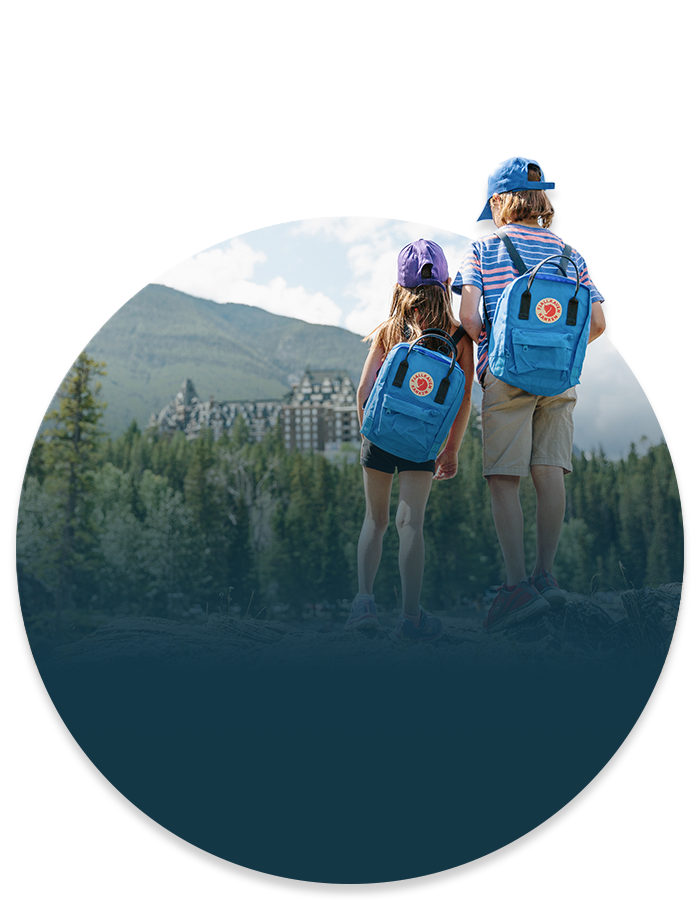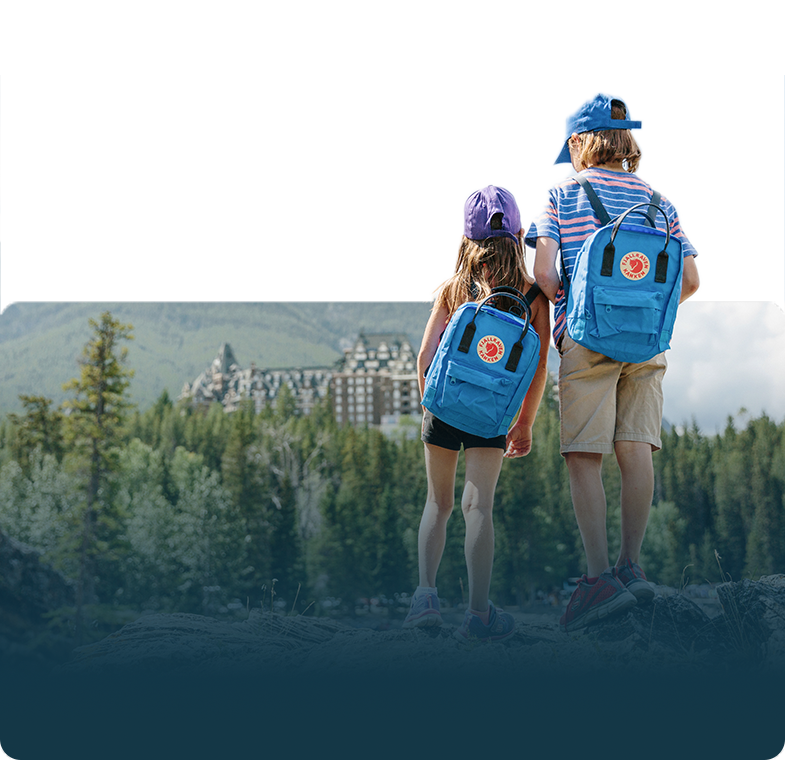A Beginners Guide to Snowshoeing in Banff National Park
Expert Snowshoe Guide Shares Beginner Tips and the Best Snowshoe Trails in Banff National Park
Fresh powder, frozen lakes and a peaceful serenity makes Banff, Alberta the ultimate place to explore winter. For those looking for a fun way to get outside, enjoy the snow and stay active – snowshoeing provides you the ability to connect with nature, enjoy pristine alpine views and feel in “awe” at the magic of nature. Banff National Park offers some of the best snow in the world making snowshoeing a fantastic way to get out and enjoy the outdoors. Similar to summer hiking, snowshoeing allows you to enjoy your favorite trails even in the winter!
Once you are out snowshoeing and walking along fresh fluffy snow, you feel the big “ahhh” that we often need in our busy lives. Whether you are venturing off with friends or with a local guide, snowshoeing is just another way to make life-lasting memories in the mountains with the ones you love.
As a snowshoe beginner it can be difficult to know where to start so we have reached out to Fairmont Banff Springs Lead Guide, Alex Mowat, to provide tips on getting started including: what to expect as a beginner, the top snowshoeing trails in Banff National Park, and step-by-step instructions on snowshoeing technique so you can get started on the right foot.
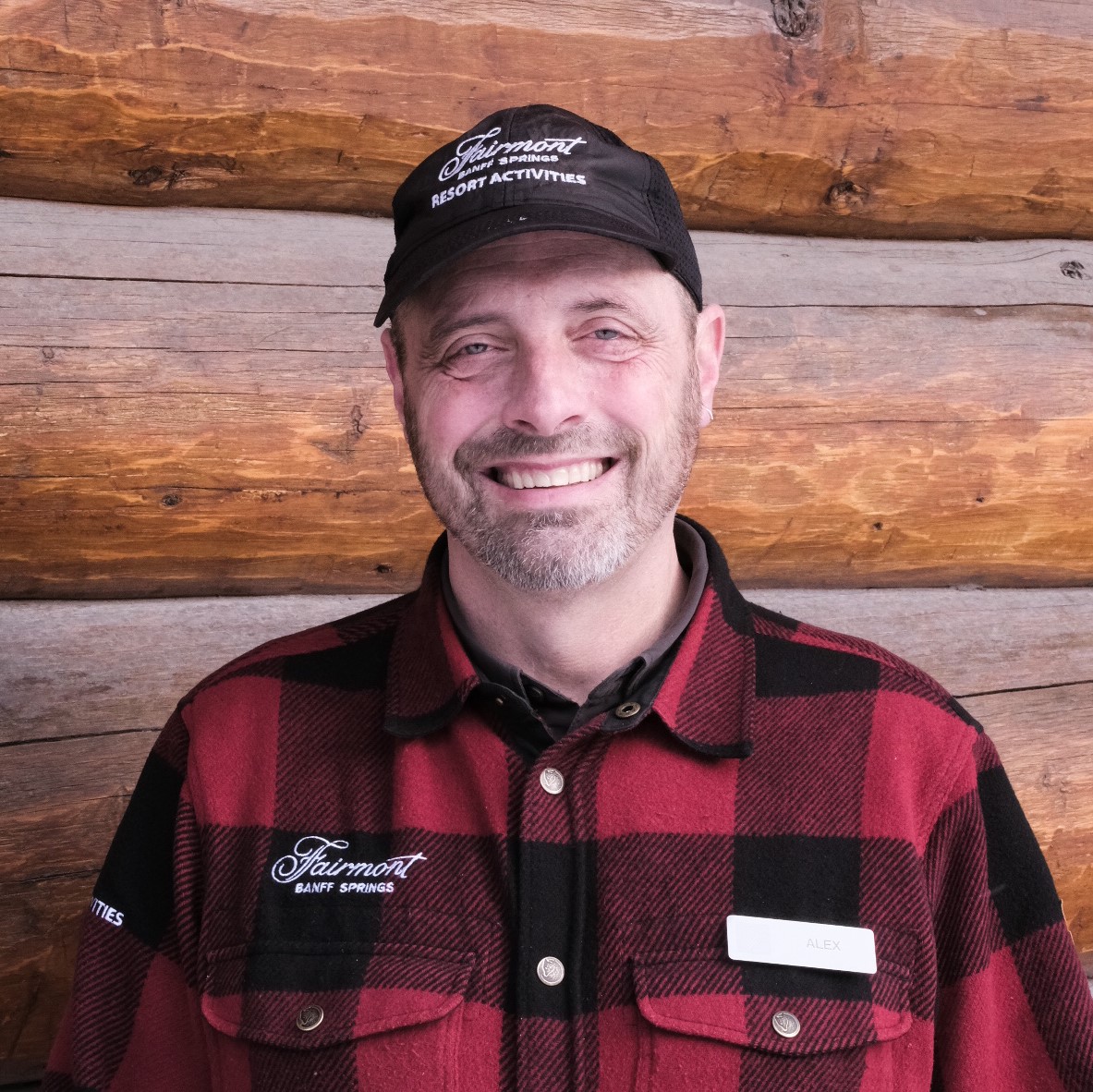
Meet Professional and Local Guide – Alex Mowat
World renowned for its pristine beauty and endless winter activities, snowshoeing peaks on the top adventures offered in Banff. So what makes Alex Mowat our most trusted snowshoe expert? Alex is a trained and certified IGA professional guide who has been guiding in the Bow Valley and across Canada for 16 years. Alex specializes in connection to nature, ecosystem interconnections and cultural history.
As a Fairmont lead guide, Alex leads and designs all-season hikes, snowshoe programs, and ice walks up frozen canyons. Raised on the outskirts of the Canadian Rockies, Alex was connected to nature at a very young age with frequent family trips to the mountains. From that point on, his admiration for nature continued to grow.
Fun Fact: Alex has climbed a snowy 20,000 ft. peak in Bolivia!
WHAT YOU NEED TO KNOW
Banff is the perfect spot to try snowshoeing given its abundant snow and safe designated trails. Snowshoeing is available to everyone – if you can walk, you can snowshoe! To set yourself up for an enjoyable day either rent or buy snowshoes. Alex recommends renting snowshoes for the first few times to ensure this is an activity you’ll enjoy before investing in personal equipment. Another recommended approach is booking a private snowshoe tour through Fairmont Banff Springs Resort Activities Team, where gear will be included and you can learn to snowshoe from our Fairmont guides so then you will be ready to hit the trails.
PRO TIP: Check the weather network before heading out – dressing appropriately for the weather is key to enjoying your snowshoeing experience. A toque, winter boots, gloves, eye protection, warm socks, a balaclava, base layers and outer shells are highly recommended.
SNOWSHOEING TECHNIQUE
Getting Started: Snowshoeing is fairly intuitive. Most snowshoes have simple “strap and go” bindings that fit a wide range of boot styles and sizes. Your stance should be wider than normal when you’re on snowshoes (in order to keep from stepping on the insides of the frames), so you may feel your hips and muscles ache after the first few times out.
Going Uphill: As you ascend hills, you use your toe or instep crampons for traction. Always place your feet firmly on snow with poles in front of you. To keep your legs in a more comfortable position for long ascents, flip up the heel lift feature (also known as a climbing bar) found under the heel on your snowshoes.
Going Downhill: On descents, keep your poles planted in front of you, knees bent and relaxed, and your body weight slightly back. As you descend, plant heel first, then toe. The instinct will be to lean back on the snowshoe tails. This reaction works well on models with angled crampons built into the heel, which are designed to dig in as you descend. If your snowshoes don’t have heel crampons, you’ll need to keep your weight over your feet, so the tip of your foot will be planted firmly. Poles can provide more balance and control as you descend.
Using Poles: While optional on flat terrain, poles are useful in deeper snow and sloped terrain. They provide you with better balance, and at the same time, give you an upper body workout. Adjustable poles can be shortened for uphill travel, lengthened for descending. Pole length should be adjusted so that your elbow is at a right angle with your hand on the grips and the bottom of the pole touching the ground.
Falling Down, Getting Back Up: Usually this happens going downhill or while running and playing in the snow. To stand up, move your poles and hands so they are sideways to the hill. Roll your body to get your knees underneath you and pointed towards the slope. Use your poles as a support to help you stand up.
MOUNTAIN SAFTEY
Snowshoeing terrain in the winter is not the same as hiking terrain in the summer, checking out trails on the Parks Canada website should always be your first go-to. Snowshoeing with a certified guide who is trained in mountain safety is a great way to explore and experience the best of the Canadian Rockies.
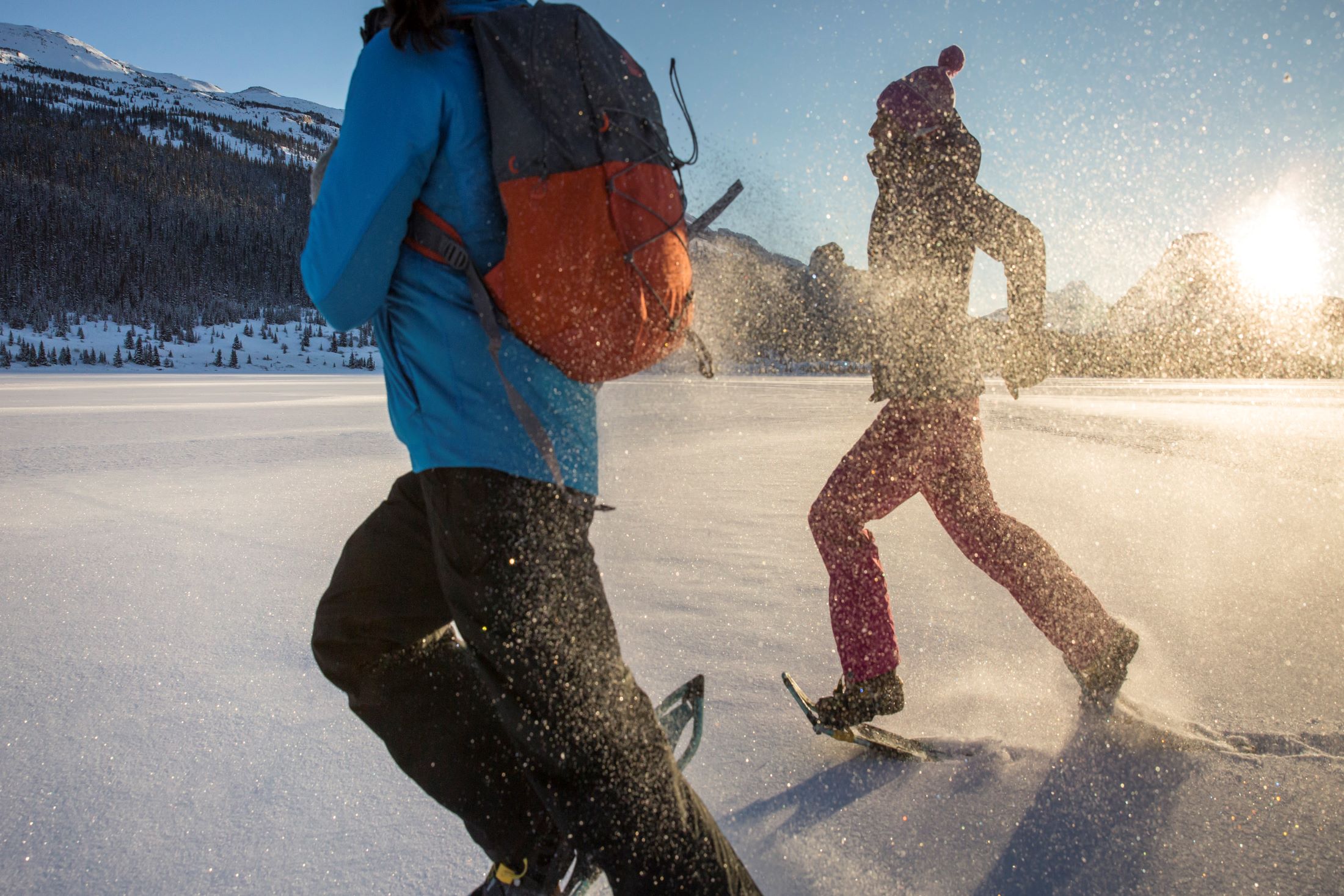
Johnson Lake – Beginner Level
Difficulty: Easy
Length: 3.2 km
Elevation Gain: minimal
Route Type: Loop
An easy family-friendly option for a relaxed day out in the mountains. Johnson Lake is a short and scenic 20 minute drive from the town of Banff. This trail takes an average of 50 minutes to complete.
Pro Tip: The road to Johnson Lake is stunningly scenic; keep your eyes peeled for wildlife roaming the area.
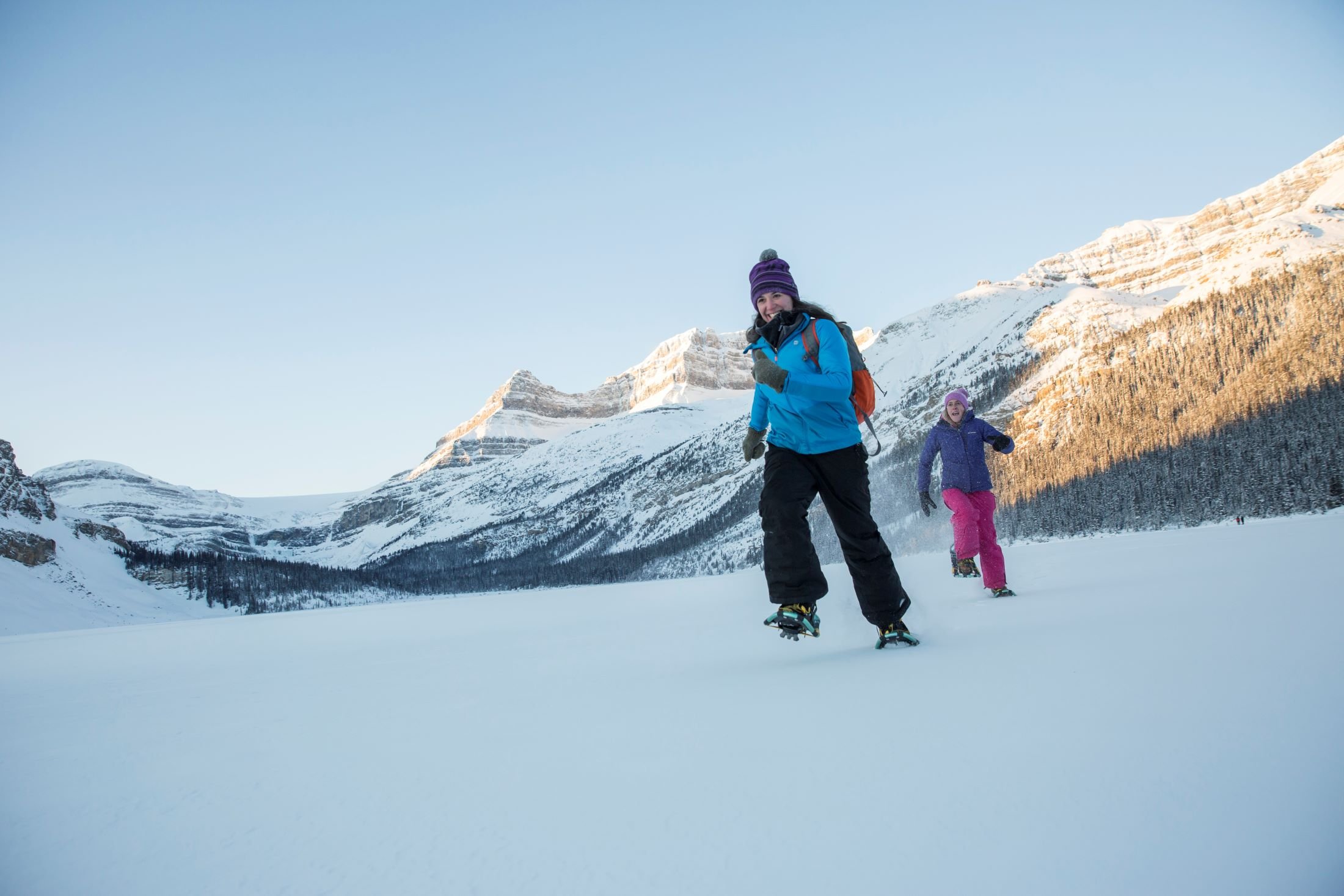
Fairview Lookout – Beginner Level
Difficulty: Easy to moderate
Length: 2 km
Elevation Gain: 100 m
Route Type: Out and back
Venture off to the beautiful Lake Louise for a snowshoe up to the Fairview Mountain lookout. This trail can be accessed by Roam Transit – Banff’s public transportation or by renting a car. The trail is a fairly steep climb but short. It takes on average 1 hour to complete.
Pro tip: Head to our sister property Fairmont Chateau Lake Louise after your snowshoe for a warm drink in Fairview Lounge.
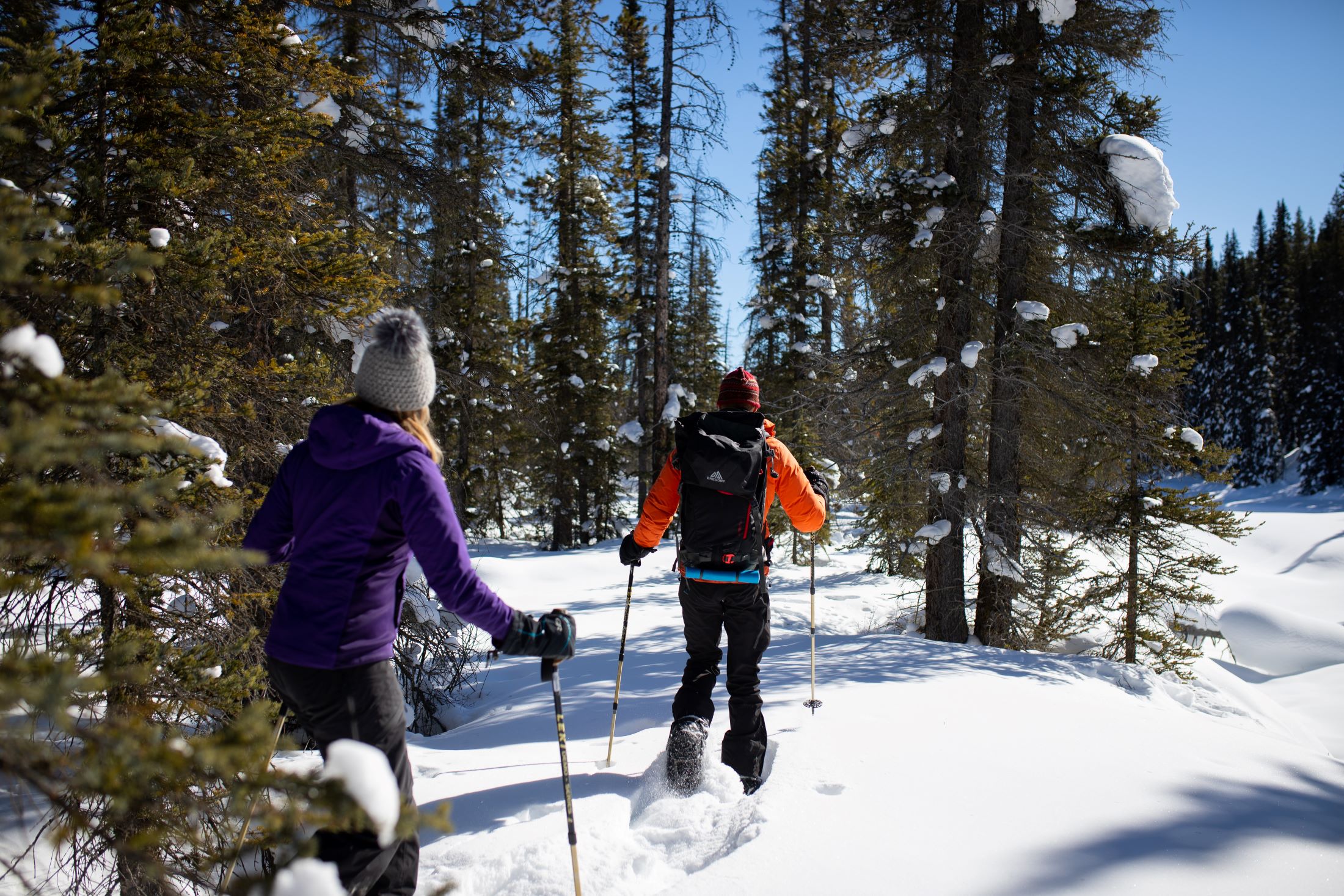
Lake Minnewanka – Intermediate/Expert Level
Difficulty: Moderately challenging
Length: 15.6 km
Elevation Gain: 505 m
Route Type: Out & back
Looking for a challenge and a good sweat? Experience this out and back trail along the beautiful Lake Minnewanka. The trailhead is a short 20 minute drive from the town of Banff. The trail takes on average 4h 31m to complete.
Pro Tip: At the far end of the trail, stop to enjoy unparalleled views of Cascade and Rundle Mountains.
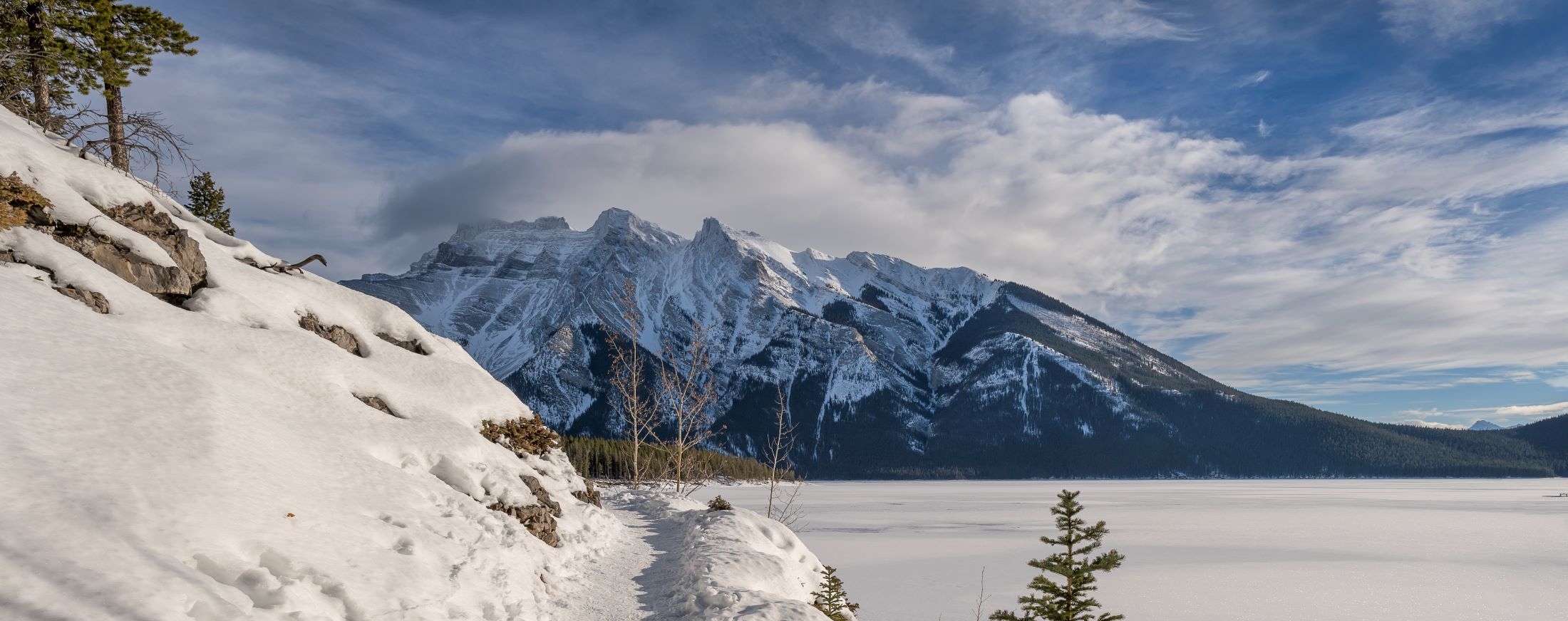
Sulphur Mountain – Intermediate/Expert Level
Difficulty: Hard
Length: 10.9 km
Elevation Gain: 756 m
Route Type: Out & back
A short bus ride from Fairmont Banff Springs is Sulphur Mountain and a very popular trail that takes you up to the top of the mountain where you can eat, shop and explore. Enjoy the scenic views of the surrounding peaks and see the town of Banff from new heights! This trail takes on average 4 h 30 min to complete.
Pro Tip: Feeling tired after reaching the summit? If you snowshoe up the mountain you are rewarded with a free gondola ride down!
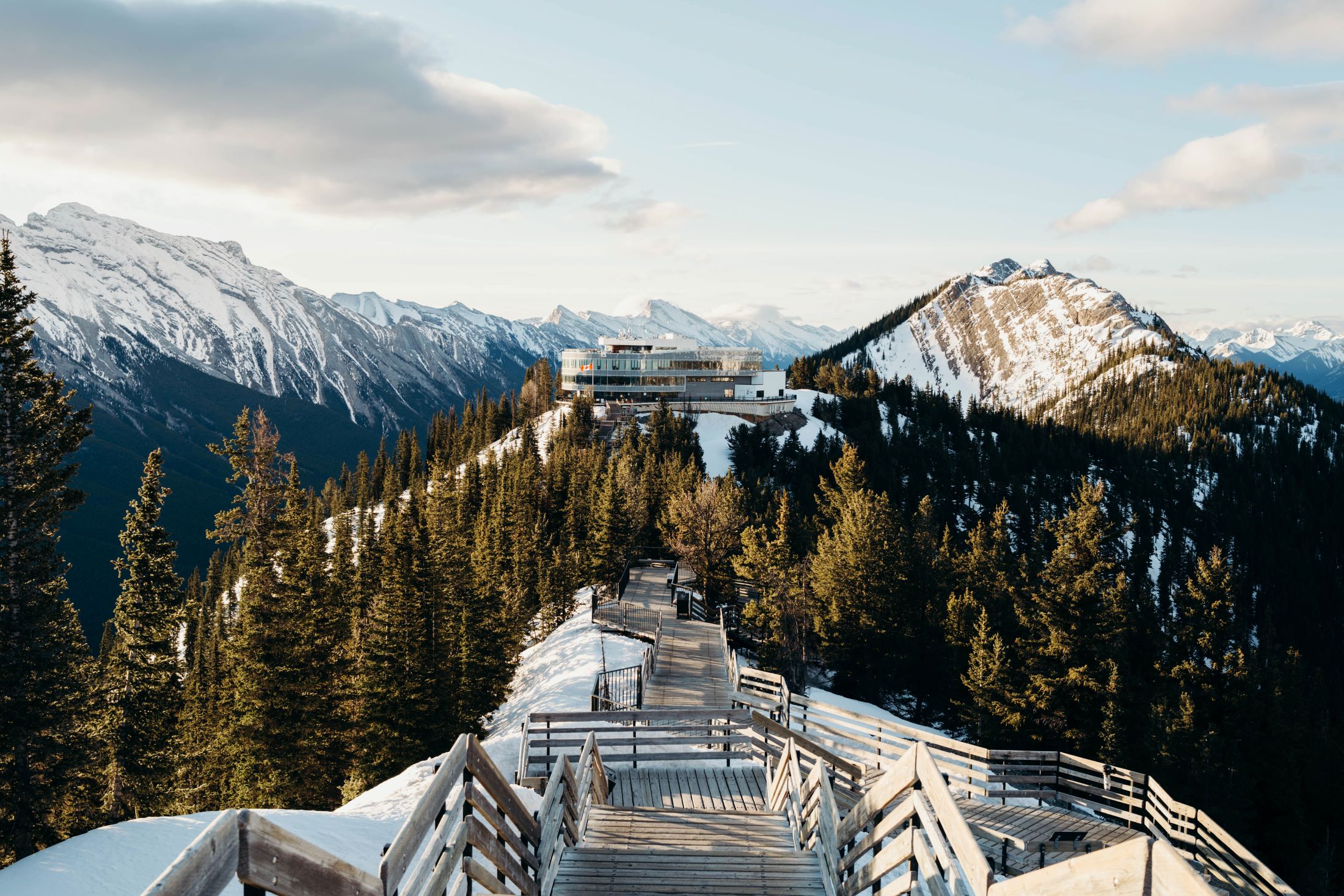
STAY IN TOUCH
From our best resort offers to exclusive events and deals. Sign up for our Fairmont Banff Springs e-newsletter and be the first to receive all the latest news, offers & more.


